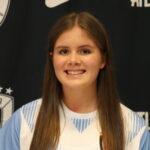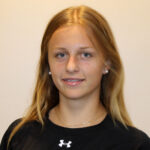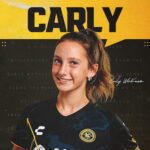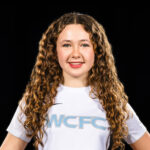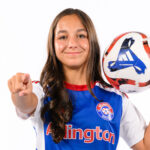Dure: Can a curriculum make a youth soccer club better?
 “Why did your son change clubs?” I asked.
“Why did your son change clubs?” I asked.
I often don’t ask because I know I’m going to get some answer that depresses or infuriates me. Parents are sometimes deluded. More often, they’re misinformed, and I hate to be the one to tell them that some coach or club made a sales pitch that doesn’t match reality.
I asked this time because I knew the mom was neither deluded nor misinformed. She played in college, like several parents I know who played at a high level but still politely nod and smile at my tales from the beer leagues. I knew I’d get an answer worth kicking around in my head.
+READ: Dure: Presenting the FREE education plan for parent coaches
“Because Club Y (his new club) has a curriculum,” she said.
That wasn’t the only reason, but it was the biggest, and it stuck in my head. Any time I hear “curriculum,” it’s going to stick in my head, mostly because I’ve had the ever-entertaining experience of interviewing Bruce Arena — specifically, right after Claudio Reyna unveiled the U.S. Soccer youth coaching curriculum at the 2011 NSCAA convention.
“A curriculum’s not going to make us any better,” Arena said at the time. “If that was the case, we’d all publish curriculums.”
And certainly, the U.S. Soccer curriculum doesn’t have total buy-in. Not even close. Three years later, the same NSCAA convention had two curriculum-related sessions: “Coalescing the USSF, USYS, and NSCAA Curricula for U8-U10: Can it be done?” and “Implementing a Curriculum for Player Development.”
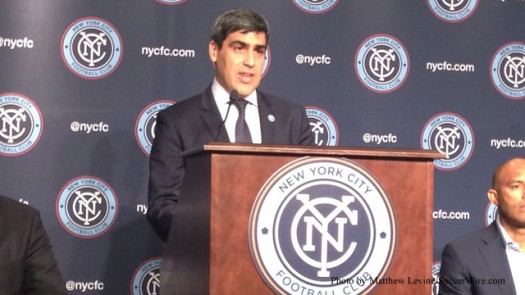 So we have several approaches to training coaches within a club, not limited to the following:
So we have several approaches to training coaches within a club, not limited to the following:
- The technical director hands out the U.S. Soccer curriculum (or one of the other ones) and gives some broad advice on how to teach it.
- The technical director comes up with a blend of the USSF, USYS and NCAA curricula, then gives some specific points of emphasis for various age groups.
- The technical staff uses whatever neat software produces the best squiggly lines on green squares, inevitably with the squares being too dark to easily read the squiggly lines, and proclaims that this is the club’s own curriculum. These sheets are handed out to coaches with little guidance.
- A charismatic self-proclaimed prophet has his own way of doing things that isn’t really written down anywhere but is kept in his head.
Having all of these different approaches is certainly chaotic. But is it wrong?
Here’s the rest of the Arena quote: “This country, I’ve always said, is too large, too different to have one style of play.”
Not just too large geographically, but also too diverse.
+READ: Dure: Young players must learn to pass the dadgum ball
Consider one NCSL (the Washington, D.C. area’s National Capital Soccer League) Under-9 game over the weekend with quite a clash of styles. One team was coached by a senior technical staffer who has told parents he sees U-9 and U-10 as a game of individuals, not as a passing game. The other team tracks its passing stats in every game and posts them on a blog to discuss. (In this game, they had 56 percent of the possession, but the coach was unhappy that they only completed 47 percent of their passes.)
So perhaps these two clubs would be difficult to fit under a single curriculum. To each its own.
 Even within one club, you can have different styles. Some kids pick up the passing game at an early age. Some kids don’t. If you’re fielding multiple teams in each age group, do you put the passers on one team and the individuals on another? Do you mix them up? Do you force the passers to show more 1v1 play and force the individuals to pass more, which will surely result in some lopsided scores against you but might be better for long-term development?
Even within one club, you can have different styles. Some kids pick up the passing game at an early age. Some kids don’t. If you’re fielding multiple teams in each age group, do you put the passers on one team and the individuals on another? Do you mix them up? Do you force the passers to show more 1v1 play and force the individuals to pass more, which will surely result in some lopsided scores against you but might be better for long-term development?
(I know, I know — the real-world answer is that you make an A team and a B team because that’s what parents demand and that’s how the NCSL schedules its games through U-11. But let’s allow ourselves to talk hypothetically.)
A pro club has the luxury of saying “We play Style X, and we’re going to select players who can play it, then teach them to play it better.” A community club does not. So how much do you tailor your curriculum to the diverse needs of your players?
+READ: Dure: Machiavelli’s guide to winning in youth soccer
Let’s say your team has been passing the ball beautifully but can’t strike the ball on goal to save its life. Do you work on that next week? Or do you say, “No, Week 4 of our curriculum is on dribbling,” and stick to it?
A curriculum is ultimately a way of bringing a little order to what would otherwise be chaotic, with each coach teaching something different. There’s certainly some value to that.
More important than that, though, is getting broader messages through to all coaches, within U.S. Soccer and within each club. When you see a U-8 team practicing its crosses and headers, you know something isn’t getting through. When you see a U-9 All-Star team full of Diego Costa’s dark arts and none of his skill, you know something isn’t getting through. (I’d like to see that club’s curriculum. Week 1: Striking … with the forearm.)
So the mere fact that a club has a curriculum may or may not be an advantage. If it’s meeting the players’ needs, great. If not, that’s why all those neat apps for drawing squiggly lines on green squares have “undo” functions. Or why coaches should always have free rein to use their brains and not just what’s on an app.
—
Beau Dure’s new book, Single-Digit Soccer: Keeping Sanity in the Earliest Ages of the Beautiful Game, is now available in paperback at Amazon and in electronic form at Amazon, Barnes and Noble, and other online booksellers. Read more about it at SportsMyriad.
SOCCERWIRE MARKETPLACE
- Girls College ID Soccer Camp – Showcase Your Skills!
- Real Colorado Cup 2026
- Join a College Coaches Showcase Camp Today
- MICFootball Punta Cana 2026
- Dana Cup Hjørring 2026
- 15th Annual Loudoun Soccer College Showcase
- OFFICIAL FC BARCELONA SOCCER CAMPS - PROMO CODE: FCBSOCCERWIRE
- New England Copa Surf 2026
- Adidas National Cup 2026
- visitRaleigh.com Showcase Series 2025, hosted by NCFC Youth


